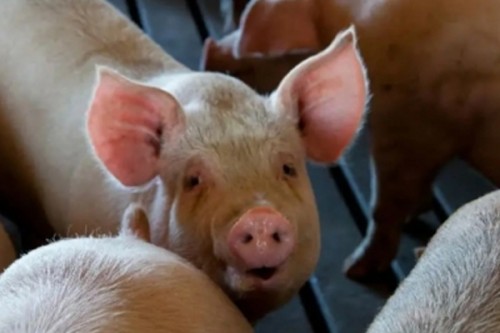New strains of influenza A virus found in pigs raise pandemic risk

Singapore, Sep 9 (IANS) Scientists have uncovered several previously unknown strains of swine flu viruses that have been circulating unnoticed in Cambodian pig populations over the past 15 years, potentially posing a pandemic risk.
The new strains include viruses that have been passed by humans to pigs, as well as some with genes originating from as far as North America, said researchers from Duke-NUS Medical School in Singapore.
Pigs are a key intermediary in the emergence and potential spread of influenza viruses between animals and humans, the researchers noted, as they provide a suitable environment for the shuffling of gene segments between avian, swine and human hosts, ultimately giving rise to new viruses.
With pork production dramatically increasing over the past 50 years, international trade and movement have further amplified the risks.
“While swine influenza viruses typically cause mild symptoms in pigs, they pose a pandemic threat to humans, as the human population may lack immunity or have inadequate protection against new strains of swine influenza viruses. Therefore, systematic surveillance is crucial in early detection and warning of new subtypes or strains,” said Prof. Gavin Smith, Director of the Emerging Infectious Diseases Programme at Duke-NUS.
From March 2020 to July 2022, the team conducted swine influenza surveillance in 18 pig slaughterhouses in Cambodia. They collected 4,089 nasal swabs from pigs in different districts of four provinces. Among these, 72 pigs -- or around 2 per cent of the pigs -- tested positive for influenza A virus.
The findings, published in the journal PNAS, showed that the scientists identified nine distinct swine influenza A virus groups, at least seven of which had not been detected for between 2 to 15 years.
Among these are multiple H3 lineages that had been passed by humans to pigs, circulating undetected for about 10 years; as well as the H1N1 subtype, which was predominant and likely derived from human origins dating back to the 2009 pandemic.
Two seasonal viruses were detected in pigs from Kandal, Phnom Penh, and Takeo provinces, and likely originated from Thailand.
The team also isolated a new swine European H1N2 variant (that originally came from birds) with North American genes in Cambodia.
While they were the first to detect this variant, their genomic analysis suggests that it had been circulating in pigs in the region since 2014, highlighting the need for better surveillance.
Delving deeper into the movement of viruses across geographical borders, the scientists found that European swine flu viruses had been sporadically introduced into South Central China and Southeast Asia in the early 2000s.
Genetic evidence indicated South Central China has served as the major source of European-like swine flu virus transmission in the region since around 2010, with the viruses subsequently spreading more widely across China and Southeast Asian countries such as Cambodia.
Further studies are needed to understand the pandemic threat of the new viruses, including how they react with human viruses and how easily they can spread, the team said.

|

|

